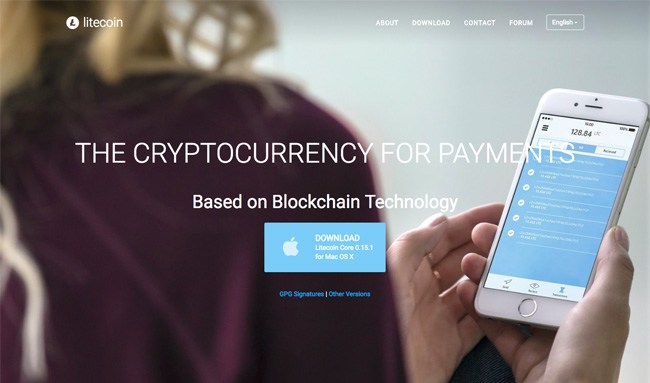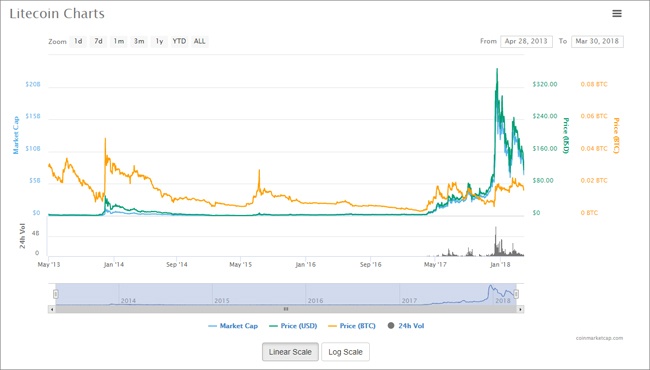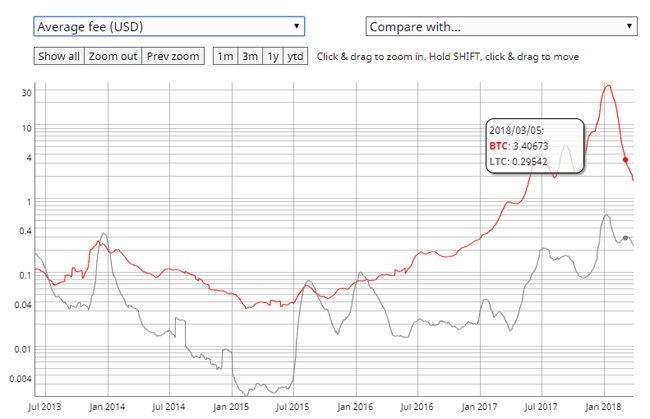It is very likely that you’ve heard about Bitcoin’s “cousins”. These cousins that we speak of are hard forks that either separated themselves from Bitcoin’s family to find a place of their own or were just created on Bitcoin’s open source code to tweak it according to what they saw fit.
Some of them, like Bitcoin Cash, moved out in characteristic bitterness, while others left or parted ways somewhat amicably, keeping doors open for the holidays while they built their own life.
Litecoin is one such Bitcoin fork which not only built itself up and then moved away from Bitcoin in a rather cordial separation, but has also settled in quite well for itself.
However, the recent controversy of LitePay that it ran into during its otherwise serene lifestyle has disturbed its peace and laid back approach to existence.
While it is not very good publicity, it has reminded people in a manner that Litecoin does still exist, as it has caught the attention of ardent followers as well as general members of the cryptocurrency community.
So here is a detailed guide to Litecoin, telling you how it came into being, what it aims to achieve, as well as what the future holds for it.
What is Litecoin?
Litecoin, like Bitcoin, is a decentralized, open-source cryptocurrency which aims to make peer-to-peer transactions faster, easier, and cheaper to perform.
And unlike Bitcoin, it has actually been able to achieve that feat in the past few years.
Litecoin was created in 2011 by former Google employee Charlie Lee, who wanted to seek a solution to the few problems that he saw in the Bitcoin network.
Litecoin, like Bitcoin, is a decentralized, open-source cryptocurrency which aims to make peer-to-peer transactions faster, easier, and cheaper to perform.
Unlike Bitcoin, it has actually been able to achieve that feat over the past few years.
Litecoin was created in 2011 by former Google employee Charlie Lee, who wanted to seek a solution to a few problems that he saw in the Bitcoin network.
One of those problems was Bitcoin’s high transaction times. These lengthy transaction times took away from its candidacy as a possible means of transaction for micropayments. To eliminate this issue, Lee made the decision to reduce the block time on the Litecoin network.
This implementation essentially meant that transactions on the Litecoin network could be performed faster.
In addition to this major change, Lee made a few changes to Litecoins monetary policy as well. The Litecoin monetary policy would see a total of 84 million coins as compared to Bitcoin’s 21 million.
Then came another issue with the Bitcoin network that Lee thought could also be improved, its hashing algorithm.
According to Lee, the way that Bitcoin had been built, it initially catered to its philosophy of letting anyone join the network and benefit from it through mining activities while only having minimal resources at their end, such as a usual CPU.
However, as the network and its usage grew with time, the equipment that supplemented mining operations had to be upgraded for efficiency. Upgrading machines meant more costs and higher costs meant potential exclusion.
This led Lee to the thought that the hashing algorithm was going to be inherently unfair.
He rightfully predicted at the time that ASIC chips would soon be replacing the GPUs, and the costs of upgrading to mine Bitcoin will only increase with time – which once again, did not seem like fair play to the mining community.
Instead of complaining, Lee simply took action. He went ahead and changed the hashing algorithm for Litecoin by using the Scrypt language instead of Bitcoin’s SHA-256.
By doing this, he ensured that while the Litecoin network would still require GPUs for its mining operations, obtaining ASICs would not “upgrade” mining power or make it faster.
By ensuring that the proof-of-work system and its real-world effects remained as fair as he could make them at the time, Lee was ready to debut the coin which now had the potential to contribute value.
The coin consisted of decreased block time to make transactions faster, an increased total supply to make more people have access to Litecoin in the future, and a modified hash algorithm that made it fair for future miners to maintain costs.
Litecoin was ready to debut, and it did so with skepticism from the community.
Being the Silver to Bitcoin’s Gold

Image credits:
Being one of the earliest forks of the revered currency had not been easy for Litecoin since no matter what it did, it always had to be compared to grandaddy Bitcoin and live up to its hype.
While the coin was based on Bitcoin’s code, Lee wanted it to give Litecoin its own identity and not just be known as Bitcoin’s weird younger sibling.
He wanted to make that distinction clear because Litecoin was now being held up to the gold standard of Bitcoin, and a sense of rivalry that was not there was being created for sensationalism.
The coin also accepted the comparison of being the silver to Bitcoin’s gold, with promotional images of these coins being distributed all over the web.
This cordial approach towards making a name for itself through doing and not through talking a big game, earned Litecoin quite a bit of support from the overall community. The perception changed from Litecoin trying to usurp Bitcoin, to simply trying to create healthy competition.
Time went by and slowly but surely, Litecoin surpassed the psychological value of $1 billion in terms of its market cap. Celebrating that milestone, Litecoin moved on to continue offering faster transactions with cheaper costs, bringing Litecoin to where it is today.
Where is Litecoin Today?
It has been more than 7 years since Litecoin was introduced to the world.
Through the circumstances described above, it established itself as one of the most consistent cryptocurrencies in the top 10 by market value.
Litecoin has only recently started to largely fluctuate due to a variety of factors as well as general market conditions.
Statistics Taken from CoinMarketCap
While being an otherwise consistent cryptocurrency, Litecoin was also happily bitten by the ascension bug in late 2017 and continued to increase in value.
It obtained its all-time high on December 19, 2017, by touching $375.29, with a market cap of over $19 billion ($19,525,500,000) at the time.
However, just like how it was blissfully affected by market conditions for the rise in value in the recent past, it has not been immune to the current tide of the drop in almost all cryptocurrencies.
Litecoin closed trading at $118.60 on March 30.
![]()
In comparison, Bitcoin, which had touched $20,000 in its December high, closed trading at $6890.52.
![]()
What Does Litecoin has to Offer to the World in its Current Form?
Litecoin has a focus on cryptocurrency transactions and aims to improve transaction processing for merchants and others.
A usual transaction on the Litecoin network gets completed within minutes of getting posted, and the average transaction fee as of March 30, 2018, was reported to be around $0.22.
This makes Litecoin one of the most adoptable coins in terms of real-world usage, where it is not only held in a digital wallet but can very well be utilized to make payments and transfer value to others.
What adds to this value proposition is the current trend of popular networks being riddled with scalability and network performance issues.
Both Bitcoin and Ethereum have proven to fail in times of high demand, with their transaction times and fees reaching unprecedented levels during December 2017 – January 2018.
While the networks have now returned to business as usual (in terms of those factors), transaction times are still not ideal, making a popular cryptocurrency like Litecoin a prime candidate for its intended use case.
For further evidence, check out this chart that shows average transaction fees on both the Litecoin and Bitcoin networks.
Statistics Taken from CoinMetrics
Notice any differences?
Trouble in Paradise: Bitcoin’s Lightning Network Could Cause Problems for Litecoin

Image credits:
It seems that even after all this time, Litecoin cannot catch a break.
While it seemed like Litecoin’s time to finally shine amongst not just other altcoins but also through the shadow of Bitcoin, news of updates from the other side of the fence spells trouble for the potential silver knight of the crypto world.
Bitcoin’s Lightning Network is coming closer to fruition, which would essentially solve the network’s scalability issues, performing peer-to-peer transactions through pre-funded, off-chain payment channels.
The transactions could then be completed instantly and at around the same costs as Litecoin does at the moment.
Connecting one block to the other block, one could also see that while Litecoin is finally basking in the glory of being good at what it does, that bliss could be quickly taken away.
When the Lightning Network becomes fully implemented for the Bitcoin Network in the future, will Litecoin still be able to have a competitive advantage?
For Litecoin, it would not just take away its spotlight, but could also cause long-term issues.
At the moment, Litecoin’s sole focus is on being an effective peer-to-peer cryptocurrency, providing transaction times and fees significantly lower than Bitcoin.
If the very issues on which Litecoin improved from Bitcoin no longer exist for Bitcoin, then the future for the Litecoin network, that has tried so hard to be noticed through its offerings, seems rather bleak.
There Could be Hope
It seems that even after all this time, Litecoin cannot catch a break. Of course, in the event of Lightning Network’s implementation, Litecoin could continue operating side by side with an improved Bitcoin.
However, seeing that it does not have as wide a reach to business to consumer partnerships or payment vendors as Bitcoin does, Litecoin may not survive on a similar playing field. Litecoin is also making attempts to keep itself relevant in the case such an event does take place, and the latest in those attempts had been to adopt Bitcoin payment vendor BitPay’s equivalent for itself, called LitePay.
However, as mentioned at the very start of this post, that trial failed spectacularly and left the Litecoin Foundation with more worries and embarrassment than the network can afford at the moment.
But another ray of hope beyond technical reasons and goes with the speculative analysis is that if the Lightning Network does get implemented as planned, then it will gradually but certainly have positive effects on the cryptocurrency that is considered “digital gold”.
Of course, our “digital silver” here would still be facing the woes of being stranded, but if this is thought about from a different perspective, then it could play out very differently.
If Bitcoin becomes the superior cryptocurrency to all altcoins except for ones which fulfill other use cases, then it would have the possibility of having its value increase over time, giving it the status of a store of value and having it stay true to its moniker of being digital gold.
In that scenario, no one would want to part ways with their Bitcoin just so they could pay for groceries, (remember Bitcoin Pizza)? What would they do, If the same amount that they spent in Bitcoin to buy a baguette, could a year later, buy them a trip to Paris (hyperbole, but you get the point)?
That is where an effective use case for Litecoin comes in.
Litecoin is already providing low transaction fees with almost no scalability issues. If Bitcoin’s worth proves to be way more than people could part ways with, then Litecoin could very well serve as one and probably the alternate option for carrying out daily transactions.
That being said, nothing could be stated for certain until things unfold in the future. For now, Litecoin supporters can only hope that the future could turn out as mentioned above – as that seems to be one of the best case scenarios for Litecoin.
Disclaimer: Cryptocurrency investments should be made with caution. While this post was written to provide an overview, it should not be taken as definitive investment advice.


